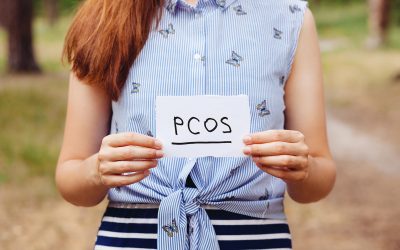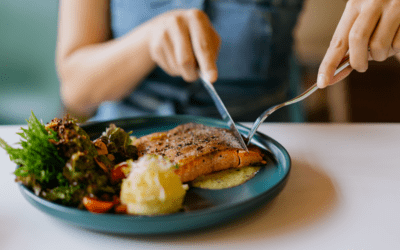By, Chelsea Fechtner, MScN, CN
Confused about carbs? Wondering if fruit is ok for PCOS?
Blood sugar balance is an important piece of this puzzle and below are strategies and information to help you understand why and how to create balanced meals!
Blood Sugar 101
Blood sugar is another name for glucose, which is our body’s preferred source of fuel. When we eat carbohydrate foods (fruits, vegetables, grains, beans), they are broken down into glucose, which enters our bloodstream.
The key with blood sugar, is balance! We want to aim to keep our blood sugar levels steady and avoid blood sugar spikes and crashes. This will help maintain a stable mood and energy throughout the day.
Another important piece of blood sugar regulation is a hormone called insulin. Insulin is made in the pancreas and helps the body use glucose by transporting it to the cells and will store extras in liver and muscles for later use. However, if we continue to take in glucose without using up what we have stored, then the cells will eventually become resistant to the insulin being released. The cells will essentially be closing the doors to the glucose and insulin, and those levels will remain high in the bloodstream.
PCOS & Insulin Resistance
Insulin resistance is important to be aware of for many reasons. It’s common in individuals with PCOS, affecting somewhere between 50-70% (1,2). Insulin resistance also contributes to many PCOS symptoms like weight gain, elevated androgens, acne, skin tags and hirsutism. Additionally, insulin resistance increases the risk of developing high cholesterol, hypertension and diabetes. All of this being said, a healthy diet plays a key role in the prevention and treatment of insulin resistance and can empower you to take control of your health!
Eating for Blood Sugar Balance
For PCOS symptom management, it is supportive to combine carbohydrates with protein, fat and fiber. These components come together to form a balanced meal that will cause a more gradual rise and fall in blood sugar, rather than a steep spike and crash. Protein and fat will increase satiety without raising blood sugar and including fiber-rich carbohydrates will help slow the release of glucose into the bloodstream, compared to refined carbohydrates.
A Balanced PCOS Plate
- Non-Starchy Veggies: Aim to fill your plate halfway with non-starchy veggies. This could be a salad with plenty of leafy greens, tomatoes, cucumber and bell pepper. You could also include roasted broccolini or sauteed mushrooms and caramelized onions.
- Protein: Aim to include a fist-sized portion of protein (about ¼ of your plate). Protein sources like wild salmon, chickpeas and organic eggs are great for fertility!
- Slow-Burning Carbohydrates: Choose slow-burning carbohydrates to incorporate fiber. These include beans, starchy veggies and whole grains. Start with ½ cup of slow-burning carbohydrates, to fill the remaining quarter of your plate.
- Healthy Fats: Include fat in your meal by cooking your veggies in olive oil, using a vinaigrette dressing on your salad, or topping the meal with avocados or pumpkin seeds.
Not every plate is going to be perfectly balanced, and this is meant to provide an overall guideline of how to start incorporating more nutritious ingredients into your meals. Start gradually, by choosing one component to focus on and build from there!
A few ideas for getting started:
- Add in 1 cup of non-starchy veggies to lunch and dinner.
- Replace refined grains with whole grains.
- Swap out 2 servings of red meat per week with wild salmon.
- Top your salad with avocado and chopped almonds.
- Add a spoonful of nut butter to your apple at snack time.
What is one small change that you can make this week to bring more balance into your eating?
References:
- DEUGARTE, C., BARTOLUCCI, A. and AZZIZ, R., 2005. Prevalence of insulin resistance in the polycystic ovary syndrome using the homeostasis model assessment. Fertility and Sterility, 83(5), pp.1454-1460.
- Ehrmann, D., Liljenquist, D., Kasza, K., Azziz, R., Legro, R. and Ghazzi, M., 2006. Prevalence and Predictors of the Metabolic Syndrome in Women with Polycystic Ovary Syndrome. The Journal of Clinical Endocrinology & Metabolism, 91(1), pp.48-53.





